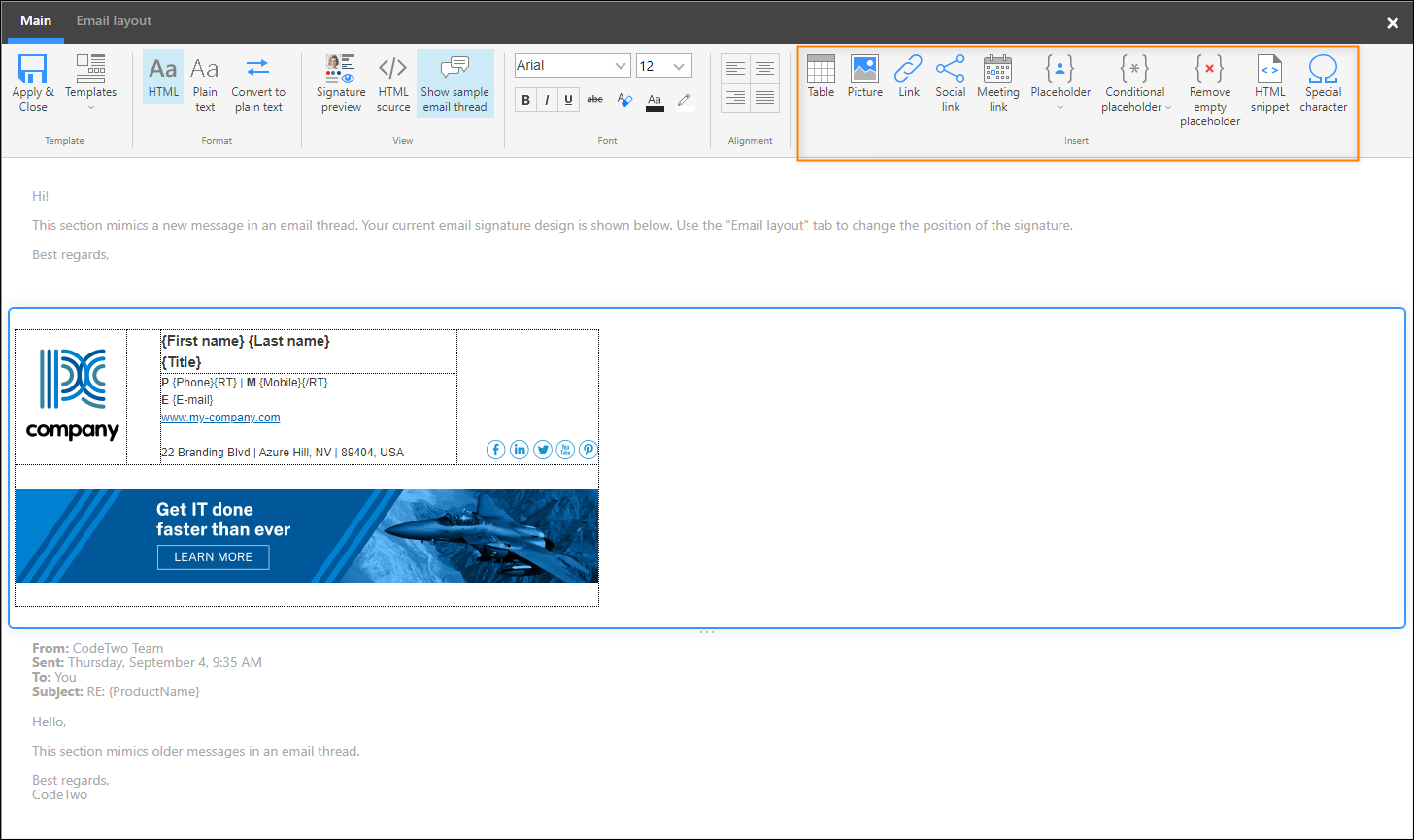
To include linked images, simply insert the image HTTP link in the HTML for the template. On the other hand, the recipient will normally see embedded images even when viewing email off-line, and image download blocking issues do not normally apply to embedded images. The message size is (potentially much) larger and the risk of interception by antivirus and anti-spam filters is higher. The advantages and disadvantages to using embedded images are exactly opposite to using linked images. Microsoft Outlook will do this when configured to embed images, or when an image is stored in a local network location. Note You cannot explicitly create cid references. Embedded images are included as embedded attachments, and then referenced in the message body with an tag, but with an image identifier, known as the "Content Id", instead of a link, as in this example: Unlike linked images, embedded images are part of the message itself. The disadvantages are that the recipient may not see linked images when viewing the message off-line, and that some email clients may block image download by default (please see additional notes on Microsoft Outlook 2003 below).

The advantages of linked images are a small message size and a low risk of interception by antivirus and anti-spam filters.

Linked images are not a part of the message itself, but are normally placed on a public web server, and then referenced in the message body with an tag, as in this example: This section explains the difference between the methods, the advantages and disadvantages to each method, and how to link or embed images. Graphics, or more precisely images, can either be linked or embedded. There are two different ways to include graphics, such as a logo, in HTML email messages and this also applies to HTML signature templates.


 0 kommentar(er)
0 kommentar(er)
